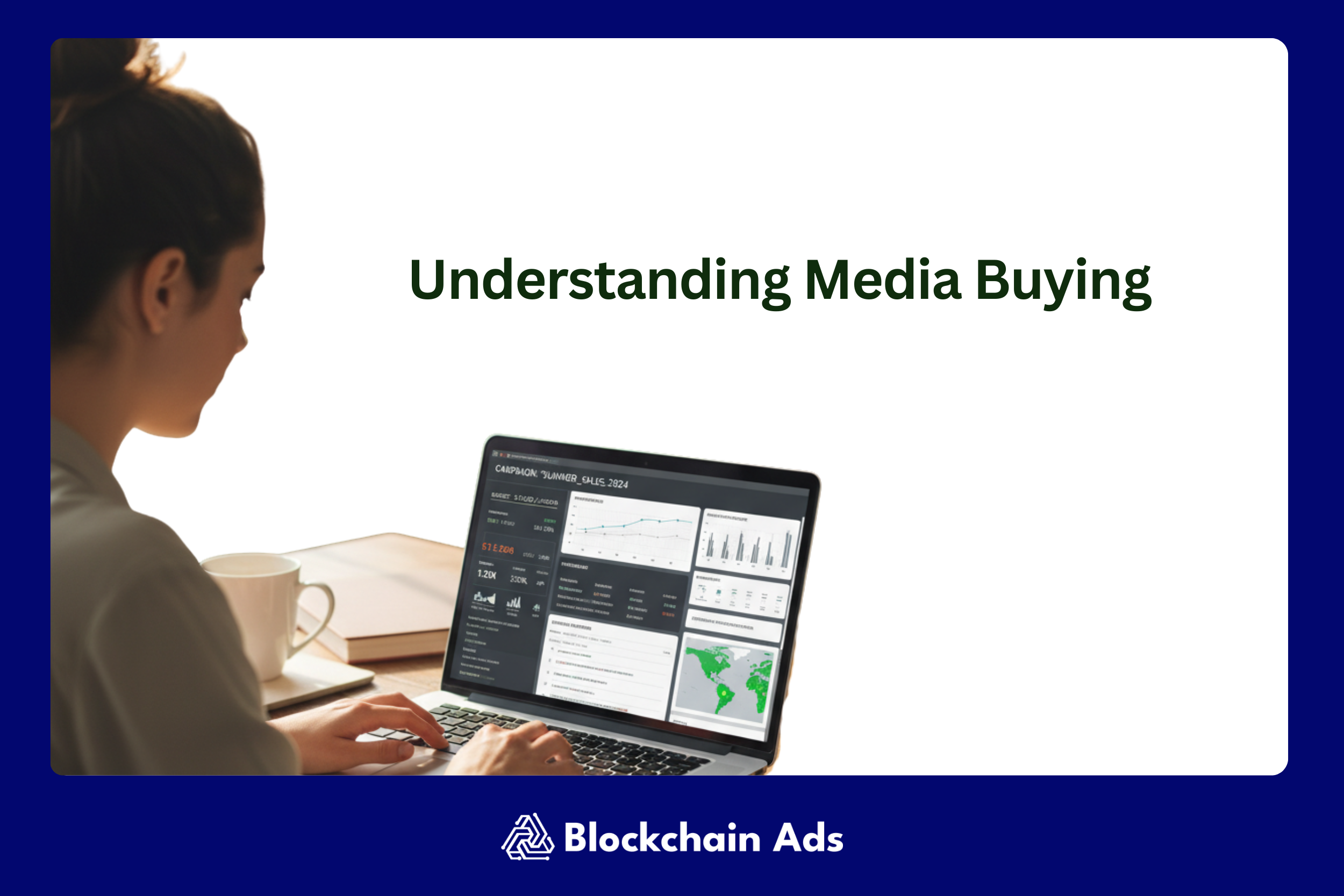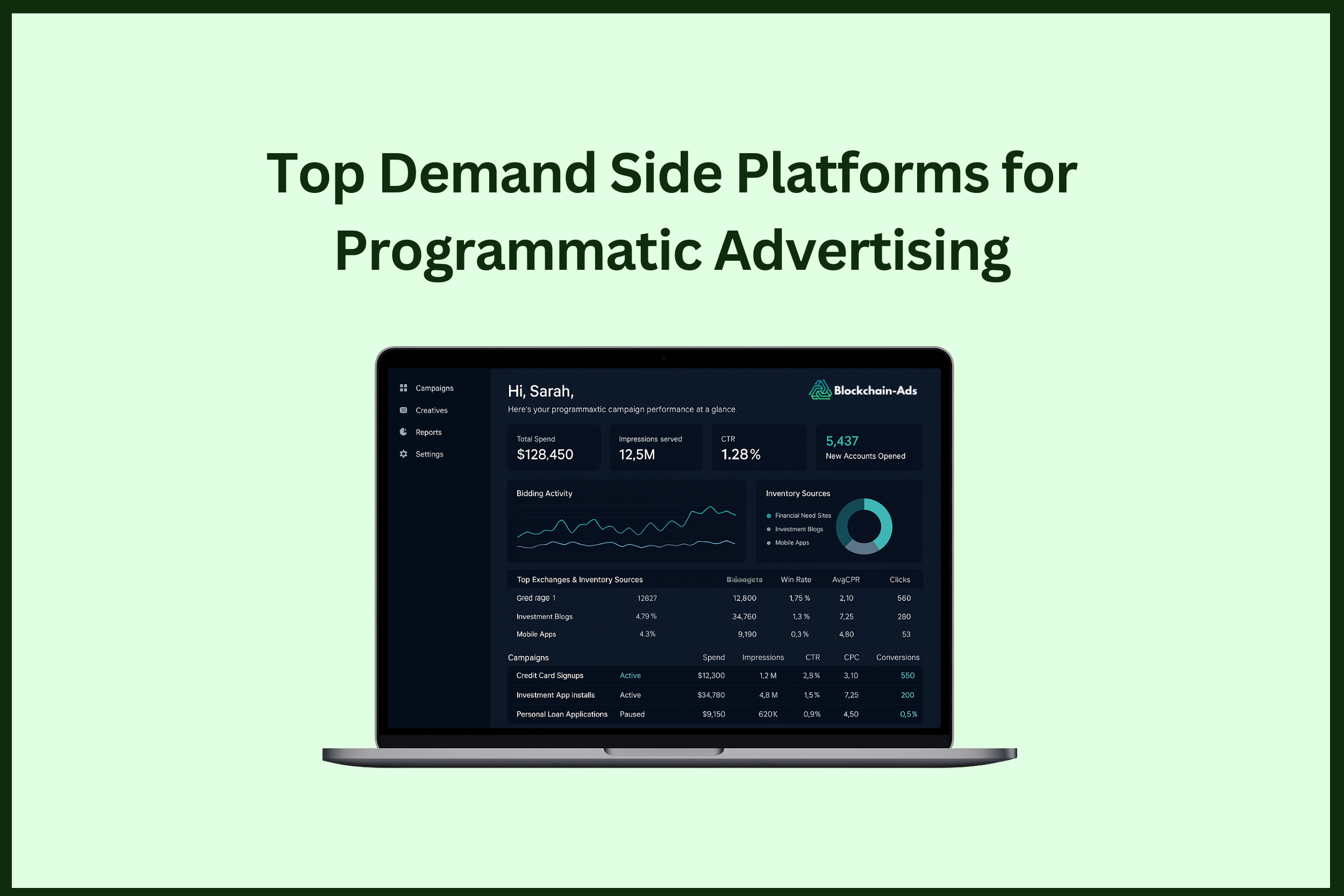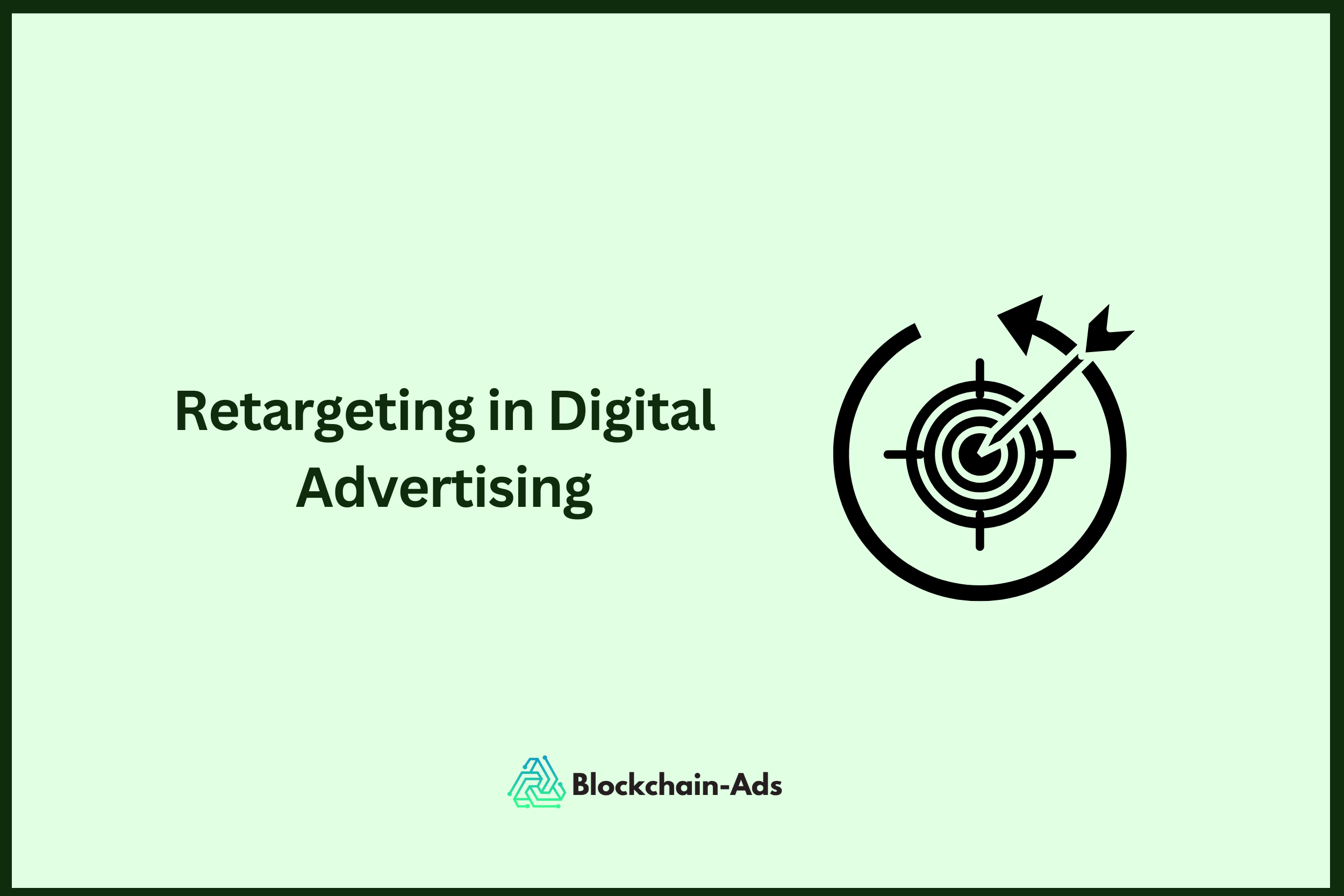A Beginner's Guide to Digital Advertising
Heading
- Cointelegraph Formula offers various ad formats to 8 million monthly readers across 190+ countries, leveraging its trusted name in crypto.
Digital advertising covers all the ways businesses market to customers through the internet. It outperforms traditional advertising. Additionally, it is a budget-friendly method to promote products or brands. You can also track its effectiveness easily.
In 2025, online advertising has changed a lot. AI is in the spotlight, and ethics are pushing out third-party cookies. Data-centric advertising is the best way to reach potential customers. It also ensures a high chance of conversion.
Digital advertising involves several steps:
- Set goals.
- Define the audience.
- Design ads in different formats.
- Set a budget.
- Launch the ad.
- Monitor it to track performance.
This article covers all you need to know regarding online advertising and how to make it work in 2025.
What Is Digital Advertising?
Digital advertising is paid advertising on the Internet. It helps businesses reach people who might want their products or services. This happens through social media, search engines, and websites.
Digital advertising is popular because many people use the internet daily. In fact, 67.9% of the world's population is online. This makes it the best option for businesses today that want to find customers.
How Does Online Advertising Work?
Advertisers create online ads to reach their target audience. They upload their ad to a platform like Google, Blockchain-Ads or Facebook. Then, they set a budget for how much they want to spend. The platform uses algorithms to match the ad with people who might be interested. When someone clicks on or views the ad, the advertiser pays a fee.
Ad platforms provide different budget types to suit advertisers' needs. For example, cost-per-click bidding means paying each time someone clicks the ad. Cost-per-thousand impressions means paying for every 1,000 people who see the ad. Advertisers choose the budget type that works best for their goals.
Advertisers also get more control over their ads. They can choose who sees their ads based on things like age, location, or interests. Advertisers can even pick what devices or browsers their ads appear on. This helps ensure that their ads are seen by people who might buy their products or services.
Types of Digital Advertising
There are many types of digital ads, each serving a different purpose. Display ads are the most common, followed by native ads. We also have search ads, audio ads, streaming ads, social media ads, among others.
Let's go through the entire list.

Display Advertising
Display ads are the most popular digital ads. They are colorful images and videos that appear on our favorite websites, blogs, or apps. Picture scrolling through a news site or social media. You see a banner ad for a new smartphone or a poster ad for a trendy clothing brand.
Display ads come in different formats. You might see rectangles, banners, or even interactive types like videos and carousels.
The main goal of display advertising is to boost brand recognition. This helps consumers remember a company or product. It also aims to drive website traffic. People can click and explore a brand's online presence.
Native Advertising
Native advertising is another popular type. Native ads are designed to blend in with their surroundings. They match the look and feel of the website or app they're on. This makes them less annoying and more appealing to users.
Native ads come in different formats, such as sponsored content and recommended products. They're a great way for businesses to promote their products without being too pushy.

Native ads help businesses drive traffic to their websites and increase sales. They're also useful for building brand awareness and reaching new customers.
Search Advertising (PPC)
When you enter certain words or phrases in a search engine, search ads show up at the top or bottom of the results page. This advertising method allows businesses to reach people who are actively looking for what they offer. For instance, if a user types "stylish shoes online," a shoe company can show an ad for its latest collection. This encourages the user to visit its website and buy a pair.

Search advertising is very effective. It nudges users to do things like purchase a product, sign up for a free trial, or request more information. When businesses meet potential customers at the right time, they can attract more visitors to their websites. This can lead to higher sales and better brand recognition.
Email Advertising
Email ads are targeted to people who have signed up to receive emails from a company. These ads are often personalized and show up in newsletters or promotional emails. They can be used to encourage people to buy something, attend an event, or take some other action. Email ads allow businesses to reach out to customers and keep them engaged with their brand.
Video Advertising
This is a type of ad that displays video content. It’s a very popular ad format for one simple reason — people love watching videos. It can appear as a short clip in a banner ad or one that plays in the background of a social media platform.
Common video ads are clips that play before, during, or after YouTube videos. They can be skippable or unskippable.
Video ads are powerful because they can tell compelling stories. This is a natural benefit of using video content. They also boost user engagement, influence users, and enhance brand credibility.
Social Media Ads
Social media ads show up on websites and apps like Facebook and Twitter. They're designed to grab the attention of specific people based on what they like, do, or who they are.
These ads can be pictures, videos, or short stories.
Social media ads help businesses find their right customers. They also raise brand awareness and drive traffic to their websites.
In-App Ads
In-app ads are placed inside mobile apps. They can be seen while playing games, checking email, or using other apps. They're a great way to reach users when they're already engaged with their device.
In-app ads appear in several formats. You can find display ads, video ads, and even interactive ads. Interactive ads give users rewards for finishing tasks. In-app ads help businesses increase app installs, drive sales, and build customer loyalty.
Affiliate and Influencer Ads
Affiliate and influencer ads thrive on the power of partnerships. They link two groups: businesses that want to grow and affiliates or influencers with large, active followings.
Affiliates and influencers share the business's products with their followers. They usually do this on social media, in blog posts, or through YouTube tutorials. A beauty brand could join forces with a well-known makeup artist. The artist would highlight their products in a tutorial. This way, they can connect with millions of potential customers.
These partnerships help businesses get more exposure. At the same time, affiliates and influencers earn commissions for each sale made through their referral link.
Audio Advertising
Audio ads are popular on music streaming services and podcasts. They are a great way to reach listeners who may not always be looking at their screens.
Audio ads are short and to the point. They usually last between 15 and 60 seconds. They can be host-read, which means the podcast host talks about the product. Or, they can be pre-recorded, like a traditional radio ad.
Connected TV Advertising
Connected TV ads appear on popular streaming services like Hulu, Netflix, and Amazon Prime. They pop up smoothly during your favorite shows or movies. They use striking visuals and bold messages, like traditional TV commercials, to draw you in. However, what sets them apart is their unique ability to target specific audiences.
This precise targeting helps businesses reach people who might be interested in their products. For instance, a fashion brand can display ads to people who’ve watched fashion videos or shows. This focused method helps businesses get the most from their ad budget. It also allows them to reach their perfect customers better.
Cost and Pricing Models of Digital Ads
Digital ads can be priced in various ways. This allows advertisers to tailor their strategy to their unique goals and budgets.
Cost Per Thousand Impressions (CPM)
One common model is Cost Per Thousand Impressions (CPM). In this model, advertisers pay a fixed amount for every 1,000 people who see their ad.
- For example, if an advertiser pays $5 CPM, they will pay $5 for every 1,000 views.
- This charge applies regardless of whether viewers interact with the ad.
This model is ideal for building brand awareness. It helps businesses reach a large audience and create a strong visual presence.
Cost Per Click (CPC)
Another popular model is Cost Per Click (CPC). Here, advertisers pay each time someone clicks on their ad.
- For example, if an advertiser has a $2 CPC, they pay $2 every time someone clicks on their ad and visits the landing page.
This pricing strategy is more targeted. It only charges advertisers when a user takes a specific action, like visiting a website or signing up for a newsletter. The CPC model is beneficial for businesses that want to drive conversions and track the direct impact of their ads on revenue.
Targeting in Digital Advertising
Advertisers use targeting to reach specific groups of people. This helps them show their ads to those who are most likely to be interested. Targeting options include:
- Demographics
- Location
- Interests
- Behaviors
Choosing the right targets helps businesses turn viewers into customers.
Demographics
Demographics involve targeting people based on their age, gender, occupation, or income level. This helps businesses reach people who fit their ideal customer profile. For instance, a fashion brand might target women aged 25-44 who live in urban areas.
Location
Location targeting helps businesses reach people in specific areas, such as cities, states, or countries. This is useful for local businesses like restaurants or stores that want to attract customers from nearby areas. For example, a coffee shop in New York City might target people living in Manhattan.
Interests
Interest targeting lets businesses reach people who like certain activities or hobbies. This helps them show ads to those who are more likely to be interested in their products. For example, a sports equipment company might target people who like fitness or outdoor activities.
Behaviors
Behavior targeting helps businesses connect with people who have specific online habits. This includes buying similar products or visiting related websites. This helps them target people who are more likely to take action. For example, an crypto exchange might target people who have visited crypto sites or purchased related products.
Key Metrics for Evaluating Digital Ads
When evaluating the effectiveness of digital ads, several key metrics stand out.

1. Reach
Reach measures the number of people who view an ad. It shows how many users see the ad in their feeds. For example, if a company launches a social media campaign, reach indicates the total number of users exposed to the ad.
2. Impressions
Impressions count the total number of times an ad appears on screens. This metric helps you understand how often an ad is shown. For instance:
- If an ad is displayed three times to 100 people,
- The impressions would total 300.
3. Click-Through Rate (CTR)
The click-through rate (CTR) tells you how many people click on an ad after seeing it. This metric shows the ad's ability to spark interest. For example:
- If 100 people see an ad,
- And 10 of them click on it,
- The CTR would be 10%.
4. Conversion Rate
Finally, the conversion rate measures how many people complete a desired action. This could include:
- Filling out a form,
- Downloading an app, or
- Making a purchase.
This metric ultimately assesses an ad's ability to drive results.
What Are the Pros and Cons of Digital Advertising?
Online advertising is a popular choice for modern businesses. However, it has both strengths and weaknesses. Below are the pros and cons of this type of advertising:
Pros:
- Precise targeting: Allows advertisers to reach users who are most interested in their product.
- Wide reach: Grants businesses access to customers from all parts of the world.
- Measurability: Offers real-time analysis and metrics for tracking ad performance.
- Personalization: Each ad can be tailored to resonate better with the target audience.
- Increased brand awareness: Online ads show the brand to millions every day. This helps to increase brand awareness and lets more people discover it.
Cons:
- Privacy concerns: Targeting is more difficult now. This is because privacy laws have led to a drop in third-party cookies.
- Ad fatigue: Some people may see the same ad multiple times in one day, making it less effective.
- Rising costs: More businesses are using online ads. This raises competition for ad space and drives up costs.
- Click ads: Competition may deploy bots to click ads, wasting businesses’ ad budgets.
Online advertising offers flexibility, measurability, and widespread reach that surpass traditional advertising. However, the steep competition in this space requires creativity to stay ahead.
Digital Advertising Examples
When it comes to digital advertising, it's easy to get caught up in theories and strategies. But what does it look like in practice? Here are some real-world examples that show how powerful digital advertising can be.
Alpari – Generating High-Intent Leads Across Regions
Alpari, a global forex broker, ran a 30-day campaign to attract new traders across multiple regions and languages. The company used a mix of display and native ads tailored to specific audience segments.
Key outcomes:
- Over 15 million ad impressions and 63,000 clicks
- 2,443 new verified user signups
- Average cost per acquisition (CPA): $20.58
- Resulted in over $250,000 in deposit volume
- 35% of users converted through retargeting
The campaign combined behavioral targeting with geographic and language filters (including English, Arabic, and Spanish). This helped Alpari focus on users who were actively exploring trading platforms and had higher conversion potential.
Coinbase – Scaling Awareness in Southeast Asia
Coinbase launched a performance-driven campaign to increase brand visibility and acquire new users in Southeast Asia, a region with rising crypto adoption.
Key outcomes:
- Over 31,000 users acquired
- 3,896 new traders onboarded in just 30 days
- Average CPA: $20.08
The ads appeared across mobile apps, websites, and platforms frequented by crypto-curious users. Targeting was refined based on location, browsing habits, and financial interest, allowing Coinbase to reach the right users at scale while maintaining efficiency.
Digital Advertising Best Practices and Tips
Digital advertising strategy can be complex. Here are some key best practices to help you get started:
- Focus on your target audience. Understand who they are and what they want. This helps you create ads that resonate with them.
- Use clear and concise language in your ads. Avoid jargon and technical terms that might confuse your audience.
- Optimize your landing pages. Make sure they load quickly and are easy to navigate. This helps convert visitors into customers.
- Test your ads regularly. Use data to find out what works and what doesn’t. Make changes to improve your ads' performance.
Additional Best Practices
- Make sure your ads are mobile-friendly. More people are using phones to access the internet, so ensure your ads look good on smaller screens.
- Use eye-catching visuals to grab attention. This helps your ads stand out in a crowded online space.
Qualify and get acess to Blockchain-Ads
Lorem ipsum dolor sit amet, consectetur
Quick Definition

Talk with some of our current partners
View all success stories.webp)

Reach 12M+
Engaged Web3 users across 10,000+ websites and 37 blockchains.







.png)





